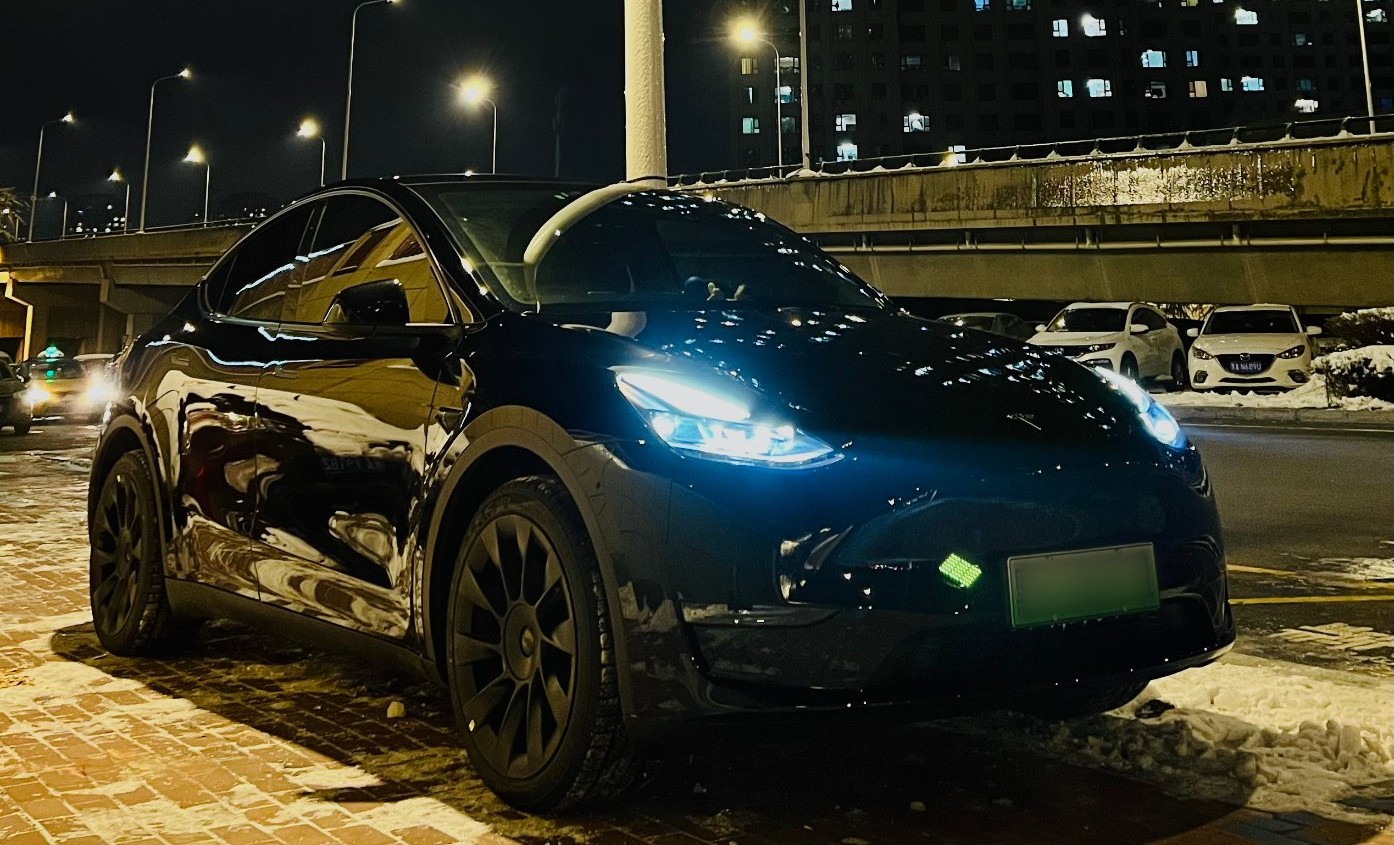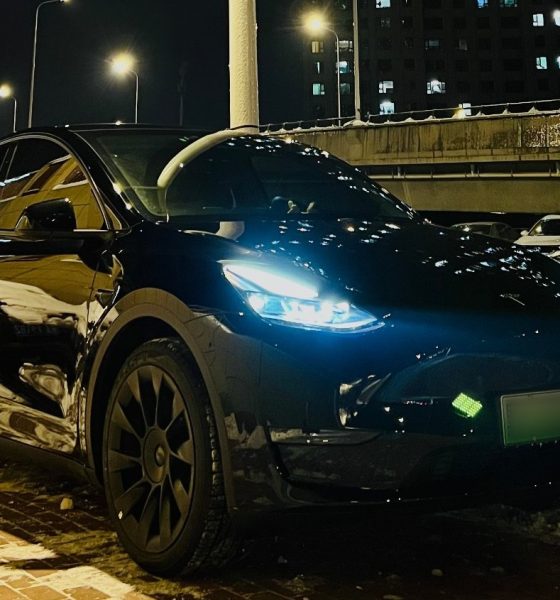

News
Electric Vehicle sales peaked in Q4 2021, Tesla dominates market share with 72%: KBB
A new report from Kelley Blue Book indicates electric vehicle sales peaked in the United States in Q4 2021, accounting for 4.5 percent of all automobile sales in the final three months of the year. Despite widespread parts and chip shortages that plague the industry to this day, 2021 was the United States EV industry’s most successful year, with nearly 148,000 electrified units sold. Tesla led all manufacturers in the EV segment with 72 percent of all EV sales for the year.
The KBB report says nearly 500,000 fully-electric vehicles were purchased last year. However, it seems the entire landscape of the “electrified” category is picking up traction. Whether it would be a fully-electric car, hybrid, or plug-in hybrid, consumer data seems to show more emphasis on buying sustainable vehicle options. While fully-electric models are preferred for environmental reasons, KBB also includes plug-in and standard hybrid sales in its estimate of electrified vehicles sold, which amounts to nearly 1.5 million, it says.
“Electrified vehicle sales accounted for 9.7% of all sales in 2021, and in the fourth quarter, 11.8% of sales were electrified,” KBB said in the report. “Yet sales might have increased even more last year if inventory and supply issues had not been as problematic. For example, battery and production troubles all but eliminated Chevrolet Bolt and Bolt EUV sales in the second half of the year, and hybrid-leader Toyota struggled with inventory throughout much of the fourth quarter.”
It is important to note that electrified vehicles include battery-electric, hybrid, and plug-in hybrid powertrains.
In the fully-electric segment, Tesla stayed atop the leaderboard in terms of market share, owning 72 percent of all EVs sold in 2021. Tesla owned 80 percent of the market share in 2020, but the company increased its overall delivery figures by 71 percent, delivering over 934,000 cars last year. Additionally, the loss of market share should not be considered a negative in Tesla’s eyes, given the company’s mission. Tesla continues to fend off competitors that emerge nearly every day. Q4 was especially potent, as 25 different EV models sold during the quarter, meaning there are plenty of options besides the four in Tesla’s lineup. Despite plenty of attractive options from other manufacturers, Tesla still remains the most purchased full-EV manufacturer in the market by a considerable margin.
According to a more in-depth analysis of the figures from KBB parent company Cox Automotive, the Model 3 was the second most popular EV in the country, being outsold only by the Model Y, which reached a whopping 39.1 percent of the total market share in the United States. The third-most-popular car in the U.S. automotive market for EVs was the Mustang Mach-E from Ford, accumulating 27,140 sales and 5.6 percent of the EV market share.
Tesla Model Y wins Cars.com’s Best Electric Vehicle of 2022 award
2021 presented encouraging figures for the growth of the EV sector in the U.S. It will be interesting to see what 2022 brings as more electrified models are set to hit the market before the year ends. The biggest catalyst to EV sales in the coming years could be the emerging EV pickup market, which will have new additions with the Ford F-150 Lightning in 2022, and Tesla Cybertruck and Chevrolet Silverado EV in 2023.
I’d love to hear from you! If you have any comments, concerns, or questions, please email me at joey@teslarati.com. You can also reach me on Twitter @KlenderJoey, or if you have news tips, you can email us at tips@teslarati.com.

News
Tesla starts showing how FSD will change lives in Europe
Local officials tested the system on narrow country roads and were impressed by FSD’s smooth, human-like driving, with some calling the service a game-changer for everyday life in areas that are far from urban centers.

Tesla has launched Europe’s first public shuttle service using Full Self-Driving (Supervised) in the rural Eifelkreis Bitburg-Prüm region of Germany, demonstrating how the technology can restore independence and mobility for people who struggle with limited transport options.
Local officials tested the system on narrow country roads and were impressed by FSD’s smooth, human-like driving, with some calling the service a game-changer for everyday life in areas that are far from urban centers.
Officials see real impact on rural residents
Arzfeld Mayor Johannes Kuhl and District Administrator Andreas Kruppert personally tested the Tesla shuttle service. This allowed them to see just how well FSD navigated winding lanes and rural roads confidently. Kruppert said, “Autonomous driving sounds like science fiction to many, but we simply see here that it works totally well in rural regions too.” Kuhl, for his part, also noted that FSD “feels like a very experienced driver.”
The pilot complements the area’s “Citizen Bus” program, which provides on-demand rides for elderly residents who can no longer drive themselves. Tesla Europe shared a video of a demonstration of the service, highlighting how FSD gives people their freedom back, even in places where public transport is not as prevalent.
What the Ministry for Economic Affairs and Transport says
Rhineland-Palatinate’s Minister Daniela Schmitt supported the project, praising the collaboration that made this “first of its kind in Europe” possible. As per the ministry, the rural rollout for the service shows FSD’s potential beyond major cities, and it delivers tangible benefits like grocery runs, doctor visits, and social connections for isolated residents.
“Reliable and flexible mobility is especially vital in rural areas. With the launch of a shuttle service using self-driving vehicles (FSD supervised) by Tesla in the Eifelkreis Bitburg-Prüm, an innovative pilot project is now getting underway that complements local community bus services. It is the first project of its kind in Europe.
“The result is a real gain for rural mobility: greater accessibility, more flexibility and tangible benefits for everyday life. A strong signal for innovation, cooperation and future-oriented mobility beyond urban centers,” the ministry wrote in a LinkedIn post.
News
Tesla China quietly posts Robotaxi-related job listing
Tesla China is currently seeking a Low Voltage Electrical Engineer to work on circuit board design for the company’s autonomous vehicles.

Tesla has posted a new job listing in Shanghai explicitly tied to its Robotaxi program, fueling speculation that the company is preparing to launch its dedicated autonomous ride-hailing service in China.
As noted in the listing, Tesla China is currently seeking a Low Voltage Electrical Engineer to work on circuit board design for the company’s autonomous vehicles.
Robotaxi-specific role
The listing, which was shared on social media platform X by industry watcher @tslaming, suggested that Tesla China is looking to fill the role urgently. The job listing itself specifically mentions that the person hired for the role will be working on the Low Voltage Hardware team, which would design the circuit boards that would serve as the nervous system of the Robotaxi.
Key tasks for the role, as indicated in the job listing, include collaboration with PCB layout, firmware, mechanical, program management, and validation teams, among other responsibilities. The role is based in Shanghai.
China Robotaxi launch
China represents a massive potential market for robotaxis, with its dense urban centers and supportive policies in select cities. Tesla has limited permission to roll out FSD in the country, though despite this, its vehicles have been hailed as among the best in the market when it comes to autonomous features. So far, at least, it appears that China supports Tesla’s FSD and Robotaxi rollout.
This was hinted at in November, when Tesla brought the Cybercab to the 8th China International Import Expo (CIIE) in Shanghai, marking the first time that the autonomous two-seater was brought to the Asia-Pacific region. The vehicle, despite not having a release date in China, received a significant amount of interest among the event’s attendees.
Elon Musk
Elon Musk and Tesla AI Director share insights after empty driver seat Robotaxi rides
The executives’ unoccupied tests hint at the rapid progress of Tesla’s unsupervised Robotaxi efforts.

Tesla CEO Elon Musk and AI Director Ashok Elluswamy celebrated Christmas Eve by sharing personal experiences with Robotaxi vehicles that had no safety monitor or occupant in the driver’s seat. Musk described the system’s “perfect driving” around Austin, while Elluswamy posted video from the back seat, calling it “an amazing experience.”
The executives’ unoccupied tests hint at the rapid progress of Tesla’s unsupervised Robotaxi efforts.
Elon and Ashok’s firsthand Robotaxi insights
Prior to Musk and the Tesla AI Director’s posts, sightings of unmanned Teslas navigating public roads were widely shared on social media. One such vehicle was spotted in Austin, Texas, which Elon Musk acknowleged by stating that “Testing is underway with no occupants in the car.”
Based on his Christmas Eve post, Musk seemed to have tested an unmanned Tesla himself. “A Tesla with no safety monitor in the car and me sitting in the passenger seat took me all around Austin on Sunday with perfect driving,” Musk wrote in his post.
Elluswamy responded with a 2-minute video showing himself in the rear of an unmanned Tesla. The video featured the vehicle’s empty front seats, as well as its smooth handling through real-world traffic. He captioned his video with the words, “It’s an amazing experience!”
Towards Unsupervised operations
During an xAI Hackathon earlier this month, Elon Musk mentioned that Tesla owed be removing Safety Monitors from its Robotaxis in Austin in just three weeks. “Unsupervised is pretty much solved at this point. So there will be Tesla Robotaxis operating in Austin with no one in them. Not even anyone in the passenger seat in about three weeks,” he said. Musk echoed similar estimates at the 2025 Annual Shareholder Meeting and the Q3 2025 earnings call.
Considering the insights that were posted Musk and Elluswamy, it does appear that Tesla is working hard towards operating its Robotaxis with no safety monitors. This is quite impressive considering that the service was launched just earlier this year.








